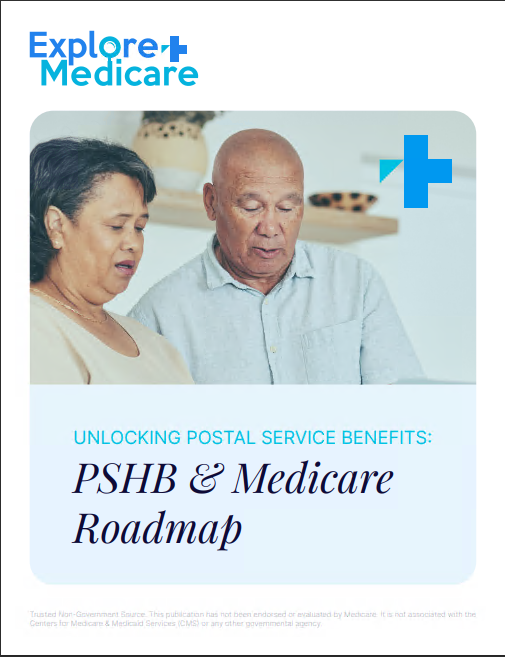Key Takeaways
-
You may qualify for Medicare before age 65 if you meet specific disability or medical conditions defined by law.
-
Approval timelines vary depending on your eligibility path, with some individuals automatically enrolled while others must apply directly.
Early Eligibility: It Happens More Often Than You Might Think
Medicare is often associated with turning 65, but that milestone isn’t the only gateway. You can qualify earlier under certain circumstances—primarily related to disability or specific health conditions. In 2025, this remains an essential route for many who rely on health coverage before the traditional eligibility age.
Let’s break down who qualifies early, how the process works, and what you need to know about your timeline and options.
Early Eligibility Through Disability
If you receive Social Security Disability Insurance (SSDI), you may become eligible for Medicare before turning 65. But there’s a waiting period involved.
You Must Receive SSDI for 24 Months
-
Medicare eligibility begins after you’ve received SSDI benefits for 24 consecutive months.
-
Enrollment is typically automatic at the start of your 25th month of receiving SSDI.
-
You will get your red, white, and blue Medicare card in the mail shortly before coverage begins.
What Counts as a Qualifying Disability?
The Social Security Administration (SSA) uses a strict definition of disability. It must be a condition that:
-
Prevents you from performing substantial gainful activity
-
Is expected to last at least one year or result in death
Some of the conditions frequently qualifying include:
-
Severe musculoskeletal disorders
-
Chronic heart or lung disease
-
Neurological impairments
-
Mental health disorders
-
Advanced stages of cancer
Important Considerations
-
If your SSDI benefits stop before your 24-month mark, you’ll need to requalify and restart the timeline.
-
The 24-month waiting period does not apply if you have certain qualifying diseases (more on that below).
Qualifying With ALS: No Waiting Period
If you’re diagnosed with Amyotrophic Lateral Sclerosis (ALS)—commonly known as Lou Gehrig’s disease—you become eligible for Medicare immediately upon starting SSDI.
-
There is no 24-month waiting period.
-
Your Medicare coverage begins the same month your SSDI benefits start.
-
Enrollment is also automatic—you don’t need to apply separately.
This exemption exists because of the rapid progression and critical care needs associated with ALS.
Early Eligibility for ESRD: Special Rules Apply
If you have End-Stage Renal Disease (ESRD) and require regular dialysis or a kidney transplant, you may also qualify for Medicare early—but the process differs significantly from ALS or SSDI.
Key Eligibility Conditions
-
You must require regular dialysis treatments or have had a kidney transplant.
-
You must have worked the required amount of time under Social Security, or be the spouse or dependent child of someone who has.
Enrollment Isn’t Automatic
-
Unlike other early-eligibility cases, you must actively enroll.
-
You apply through your local Social Security office.
Coverage Timelines
Depending on your treatment type, Medicare coverage begins on a specific timeline:
-
Dialysis: Coverage starts on the first day of the fourth month of treatment.
-
Home dialysis: If you’re trained to do dialysis at home, coverage can start earlier, in the first month.
-
Transplant: Coverage can start the month you’re admitted to a Medicare-approved hospital for transplant preparation, as early as two months before your surgery.
When Coverage Ends
-
If you stop dialysis or your transplant is successful, coverage ends 12 months after your last dialysis treatment or 36 months after a successful transplant.
-
If you resume dialysis or need another transplant, you may be eligible again.
You Still Need to Choose Coverage Options
Even if you qualify early for Medicare, you’ll still need to decide which parts of Medicare to enroll in.
Parts A and B
-
Part A (hospital insurance) is typically premium-free if you or your spouse paid Medicare taxes for at least 10 years.
-
Part B (medical insurance) has a monthly premium, which for 2025 is $185, and an annual deductible of $257.
Part D Prescription Drug Coverage
-
You are eligible for Part D once you’re enrolled in Parts A and/or B.
-
You’ll need to enroll separately in a drug plan unless you receive coverage through another source, such as Medicaid.
Medigap or Other Coverage Options
-
People who qualify for Medicare early due to disability may be eligible to buy a Medigap (Medicare Supplement) plan, depending on your state’s rules.
-
Alternatively, you can consider other health plan options available through Medicare.
What Happens When You Turn 65?
If you were already receiving Medicare due to disability or illness, your coverage will continue automatically once you turn 65.
You Can Add or Change Plans
-
You can enroll in a new Medicare Advantage plan or switch between plans.
-
You may also qualify for a new Medigap open enrollment period at age 65, even if you didn’t buy one earlier.
Income-Related Adjustments Still Apply
If your income is above certain thresholds, you may pay an Income-Related Monthly Adjustment Amount (IRMAA) for Parts B and D.
In 2025, IRMAA applies to individuals earning more than $106,000 or couples earning more than $212,000.
Dual Eligibility: If You Also Qualify for Medicaid
If your income and resources are limited, you may also qualify for Medicaid while receiving Medicare. This is called dual eligibility.
Benefits of Dual Eligibility
-
Medicaid may help cover Part B premiums, deductibles, and copayments.
-
You may receive Extra Help for prescription drug costs.
-
You may automatically be enrolled in certain Medicare health plans that coordinate both types of coverage.
How to Apply for Early Medicare
The application process depends on the reason for your early eligibility.
If You’re on SSDI
-
You do not need to apply separately. Enrollment is automatic in the 25th month of benefits.
-
Make sure your mailing address is up to date with Social Security so you receive your Medicare card.
If You Have ESRD
-
Apply through the Social Security office once you begin dialysis or are scheduled for transplant.
-
Provide medical documentation and hospital records.
If You Have ALS
-
Enrollment is automatic as soon as SSDI begins.
-
Coverage starts the same month your SSDI benefits begin.
Timelines to Remember
-
SSDI: Medicare begins in month 25 of benefits.
-
ALS: Medicare begins the same month SSDI benefits start.
-
ESRD: Medicare begins in the 1st or 4th month depending on treatment type.
Knowing when to expect your coverage to start is crucial so you don’t go uninsured or delay treatment.
Stay Ahead of the Curve
Understanding early Medicare eligibility ensures you won’t miss important coverage options just because you’re under 65. Whether you qualify through SSDI, ALS, or ESRD, the program is designed to provide timely help—if you know where and when to look.
You don’t have to navigate it alone. Get in touch with a licensed insurance agent listed on this website to walk you through your next steps, answer your questions, and make sure you get the benefits you’ve earned.









